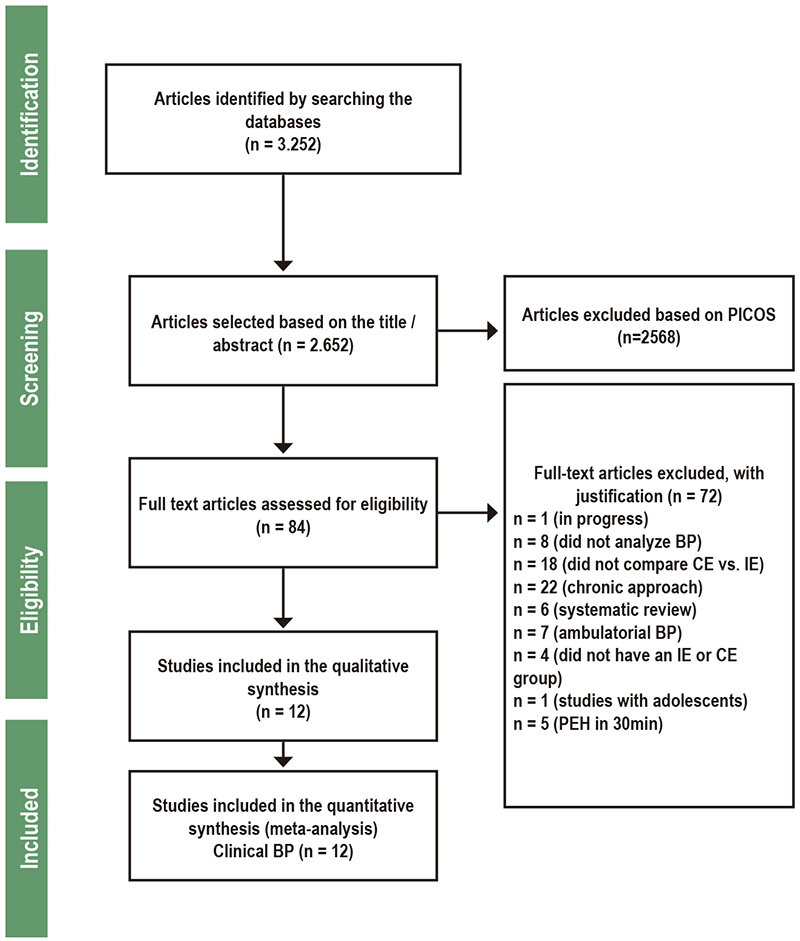Volume 115, Nº 1, July 2020
DOI: https://doi.org/10.36660/abc.20190107
ORIGINAL ARTICLE
Acute Effect of Interval vs. Continuous Exercise on Blood Pressure: Systematic Review and Meta-Analysis
Raphael José Perrier-Melo
Eduardo Caldas Costa
Breno Quintella Farah
Manoel da Cunha Costa

Figure 1 - PRISMA flowchart of selected studies. BP: blood pressure; CE: aerobic exercises performed continuously; IE: interval exercise; PEH: post-exercise hypotension.
Abstract
Background: Continuous aerobic exercise (CE) is one of the main non-pharmacological recommendations for hypertension prevention and treatment. CE is safe and effective to reduce blood pressure chronically, as well as in the first few hours after its performance, a phenomenon known as post-exercise hypotension (PEH). Interval exercise (IE) also results in PEH.
Objective: This systematic review and meta-analysis sought to compare the magnitude of PEH between CE and IE in adults.
Methods: A systematic review of studies published in journals indexed in the PubMed, Web of Knowledge, Scopus and CENTRAL databases was performed until March 2020, which compared the magnitude of PEH between CE and IE. PEH was defined as between 45-60 minutes post-exercise. The differences between groups on blood pressure were analyzed using the random effects model. Data were reported as weighted mean difference (WMD) and 95% confidence interval (CI). A p-value <0.05 was considered statistically significant. The TESTEX scale (0-15) was used to verify the methodological quality of the studies.
Results: The IE showed a higher magnitude of PEH on systolic blood pressure (WMD: -2.93 mmHg [95% CI: -4.96, -0.90], p = 0.005, I2 = 50%) and diastolic blood pressure (WMD: -1,73 mmHg [IC95%: -2,94, -0,51], p= 0,005, I2 = 0%) when compared to CE (12 studies, 196 participants). The scores of the studies on the TEXTEX scale varied from 10 to 11 points.
Conclusions: The IE resulted in a higher magnitude of PEH when compared to CE between 45 and 60 minutes postexercise. The absence of adverse event data during IE and CE in the studies prevents comparisons of the safety of these strategies. (Arq Bras Cardiol. 2020; 115(1):5-14)
Keywords: Hypertension; Blood Pressure; Post-Exercise Hypotension; Exercise Therapy; Exercise; Review.















